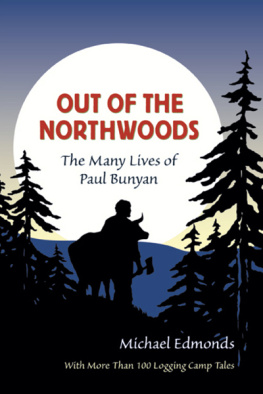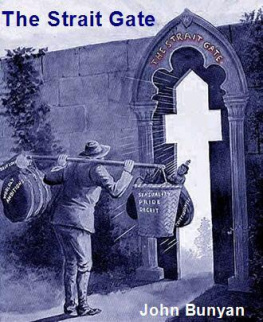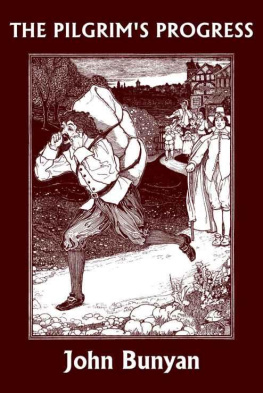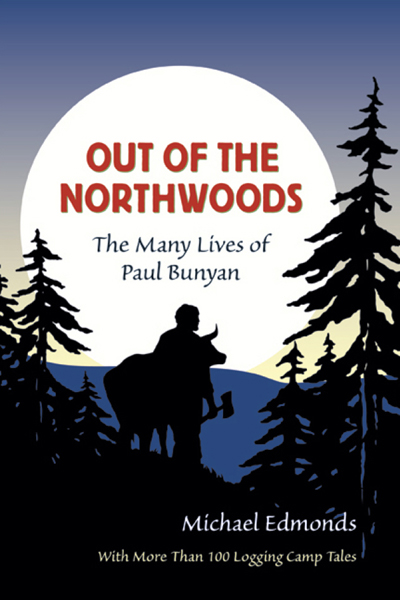CAST OF CHARACTERS
Bartlett, William W. (18611933): historian of the Chippewa Valley who interviewed loggers, ca. 19131927, to gather Bunyan stories
Brown, Charles E. (18721946): director of Wisconsin Historical Museum who collected Bunyan stories, 19061946, and published fifteen booklets of them, 19221945
Charters, W. W. (18751952): Ohio State University professor who collected Bunyan materials as a hobby and corresponded with Bunyan editors during the 1940s
Dorson, Richard (19161981): Indiana University professor of folklore and the most vocal critic of the midcentury Bunyan mania
Laughead, William (18821958): advertising manager of the Red River Lumber Company, which issued more than 125,000 copies of his Bunyan stories, 19141944, and launched Bunyans fame; invented the names of Bunyans crew, including Babe the Blue Ox
Lovejoy, Parrish S. (18841942): forester with the Michigan Department of Conservation who wrote a series of Bunyan tales under the pseudonym Charles Albright for the American Lumberman, 19161918
MacGillivray, James (18731952): Michigan lumberman who heard the Round River tales in the Saginaw Valley in 1887 and drafted a text of them for his brother Williams Oscoda, Michigan, newspaper in 1906
Rockwell, James E. (18831953): Duluth, Minnesota, reporter who published the first collection of Bunyan stories to reach a national audience, in the Milwaukee nature magazine Outers Book, in February 1910
Shepard, Eugene (18541923): Rhinelander, Wisconsin, timber cruiser and northwoods promoter who claimed to have invented Paul Bunyan
Shephard, Esther (18911975): San Jose State College professor who collected Bunyan tales in the Pacific Northwest for a 1924 book, one of two that made Bunyan famous (no relation to Eugene Shepard)
Stevens, James (18921971): West Coast logger and public relations counsel for the lumber industry who in 1925 wrote the other book that made Bunyan famous
Stewart, Bernice (18941975): northern Wisconsin native who, as a University of Wisconsin undergraduate collected tales in the field between 1914 and 1916 with her English professor, Homer Watt
Watt, Homer A. (18841948): New York University professor who, while at the University of Wisconsin in 19141916, gathered and published with Bernice Stewart the earliest collection of Bunyan tales that was systematically gathered in the field
PREFACE
WHEN I RECENTLY ASKED MY ELEVEN-YEAR-OLD if shed ever heard of Paul Bunyan, she answered, Sure. Hes that great big guy with the blue cow. She was less certain about why he was famous and couldnt remember exactly how shed heard of him. Folklores funny that way. Everybody knows it, but most of us arent sure how we first heard it, and nobody seems to know where it comes from.
Although Id encountered Paul Bunyan as a child in the 1950s, my professional curiosity about him was aroused only in 2005 when I stumbled across a 1916 newspaper photograph of a young woman under the headline, Extracts from Paul Bunyan Yarns. She was Bernice Stewart, who, as a college student during World War I, traveled through logging camps to collect Bunyan stories from lumberjacks. As if that werent strange enough, when I looked into her work further I learned that, although everyone recognized his name, no one actually knew where Paul Bunyan came from.
Here was a puzzle worth investigating, one that even had an analogue in a Bunyan tale from Wisconsin: As a trailer of game [Bunyan] was unsurpassed. Once he came on a moose in the woods that had died of old age. Having some spare time, Paul in a short time traced this moose back to the place where it was born.
I, too, had some spare time, so I set out on his trail. I soon discovered that previous researchers had overlooked many early Bunyan publications and manuscripts from Wisconsin. These documents suggested that some widely repeated facts about the talessuch as that they started in Maine in the mid-nineteenth century, that a real-life Paul Bunyan had fought in an 1837 Canadian rebellion, and that the stories were first printed in Michigan in 1906were mistaken.
From that point on, the game was afoot, as Sherlock Holmes would say. I spent much of 2007 and 2008 pursuing it, and at almost every turn a new mystery or paradox greeted me. If the stories were created by macho lumberjacks in all-male settings, why werent there any dirty jokes about Bunyan? Where did Charles Brown, the most prolific Wisconsin publisher of the tales, acquire his stories? Why did the W.P.A. Wisconsin Folklore Project records on Bunyan disappear? How did the private jokes of working-class loggersthe Hells Angels of their dayturn into the cutesy caricature that every eleven-year-old recognizes a century later?
As I ferreted out answers to questions such as these, I was astonished at the hold that Bunyan took on me. Ive always been fascinated by the ways that knowledge travels across time and space, but I was surprised at how thoroughly I enjoyed digging up Bunyans roots. The early stories themselves, with ironic touches reminiscent of Mark Twain and logical contradictions worthy of Lewis Carroll, had much to do with it. They are, quite simply, fun. And the people who produced, promoted, and perverted the tales were fascinating characters. More than one of them had lied, stolen, or cheated to make tales told by wilderness lumberjacks into a commodity that could be sold for profit. All told, Bunyans strange career was a fascinating episode in American intellectual history.
















